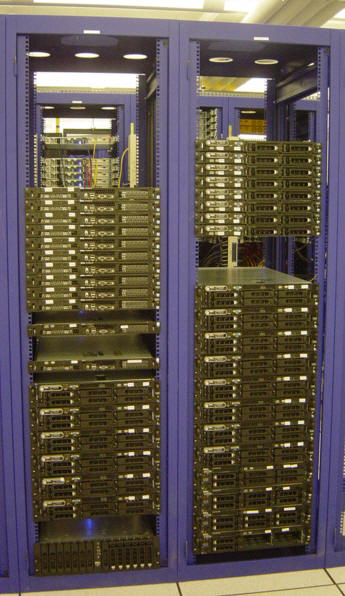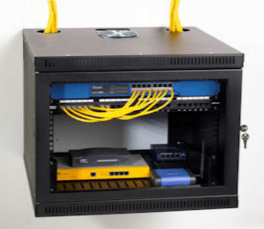In order to organize cabling in easy and convenient way, one should use racks. They come in 19″ and 23″ standard width and vary in height. Most common are 19″ racks or “EIA racks”. They are fitted with mounting holes that support any size equipment installation.

Subtypes include wall-mounted racks, skeletal frames, and full equipment cabinets – they vary in specifications.
Wall-mounted racks (or wall mounted brackets) are best for saving space. They can provide access to the back of the equipment due to a frame that swings out 90 degrees. It is ideal solution for small companies.

Most common type of rack is skeletal frame. It is using open design with easy access to the back and to the front.
Obviously, that requires some additional space around the rack . The frame includes cable management, which is a must for projects of any size. Equipment that can be mounted in the rack is not limited by networking equipment. Keyboard, monitor, and utility shelves can be mounted, as well as server computers.
Full equipment cabinets are the most expensive solutions. They accommodate cooling system inside, and has Plexiglass door. It provides better security and electromagnetic interference protection.
In order to provide wire management, one can use cable accessories that can help cable organization in the rack. Cable hangers and rear mounted cable hangers can help to ensure that cable management will be easy and understandable.
It is important to remember that all of the equipment is using electricity, which can be dangerous for human life. Electrical grounding is necessary precaution that will ensure safe environment. It should be evaluated by electrical contractor that the voltage potential accumulated by the racks will be properly grounded.
For fiber distribution cabinets, you can check more here our 19′ rack fiber distribution panels.


